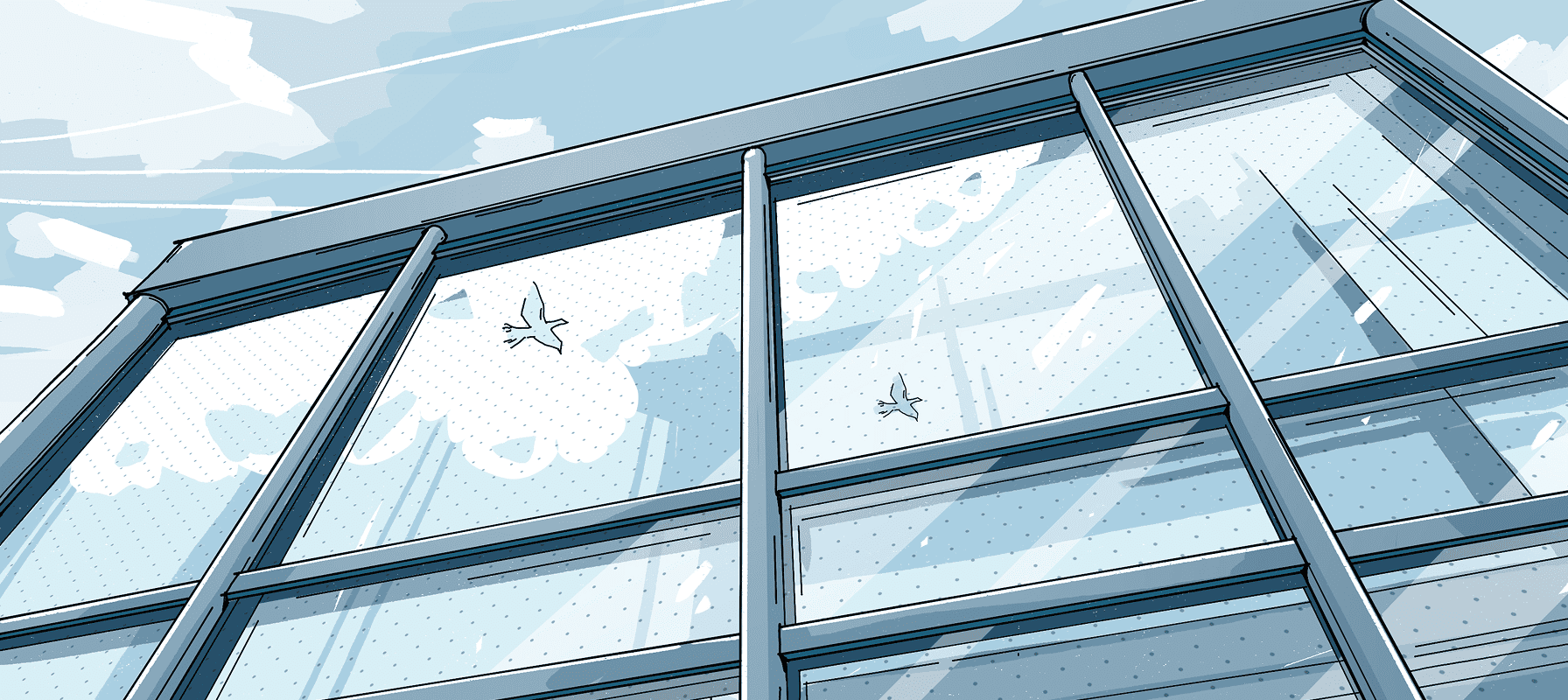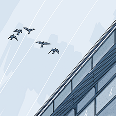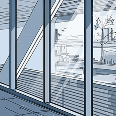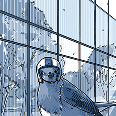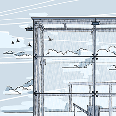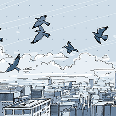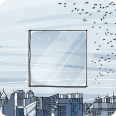Find out what Vitro BirdSmart™ can do
for your project.
Vitro BirdSmart ™
Vitro BirdSmart ™ Bird Safe Glass is a first-surface laser-etched glass featuring four dot patterns (2×2 square, 2×4 rectangle, 2×4 diamond and 2×2 diamond) with directional and non-directional orientation.
BirdSmart™ is manufactured using laser etching, which is a “clean” etching process that is non-caustic and uses no harsh chemicals to apply bird-friendly visual markers, offering a greener way to prevent bird strikes.

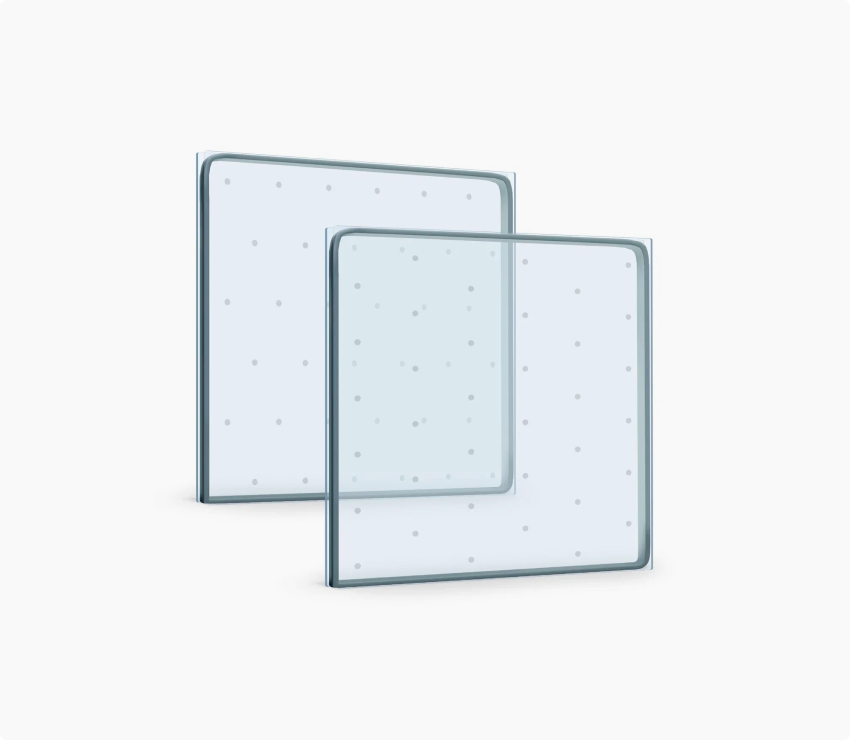
BirdSmart™
BirdSmart™ glass has received American Bird Conservancy (ABC) tunnel testing approval to comply with existing and emerging building codes. The 2×2 patterns have a threat factor of 20, while the 2×4 patterns come in at 25. First-surface dot patterns enhance glass visibility to birds, making it easier for them to recognize this as an impassable barrier.
In addition, pairing laser-etched BirdSmart™ glass with a low-e coating can lead to peak energy performance without impacting Visible Light Transmittance (VLT) or Solar Heat Gain Coefficient (SHGC).

Your Guide to Bird-Friendly Glass Options
Discover all bird-friendly glass options in our brochure.
Download Now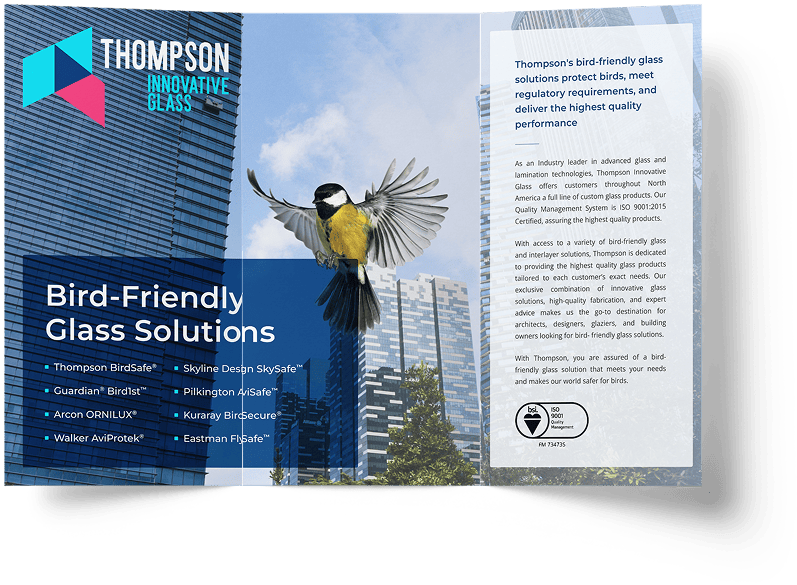
Frequently Asked Questions About Bird-Friendly Glass
What is bird-friendly glass?
Bird-friendly glass is specially designed to minimize bird collisions with buildings. It typically features patterns, coatings, or designs that make the glass more visible to birds, reducing the risk of injury or death.
Why is bird-friendly glazing important?
Each year, millions of birds die from collisions with glass. Bird-friendly glazing helps protect bird populations while promoting sustainable and environmentally conscious building practices.
How does bird-friendly glass work?
Bird-friendly glass incorporates visual markers such as patterns, frits, enamels or UV coatings that birds can see but are minimally obtrusive to humans. These features disrupt reflections and transparency, which are the primary causes of bird collisions.
What are the most common patterns for bird-friendly glazing?
Common patterns include dots, lines, and grids, typically spaced following the “2x4 rule”: patterns are spaced no more than 2 inches apart horizontally or 4 inches vertically to effectively deter birds.
Is bird-friendly glass aesthetically appealing?
Yes. Modern bird-friendly glazing solutions are designed to blend seamlessly into architectural designs, with subtle patterns or coatings that maintain visual appeal.
Is bird-friendly glass compliant with building codes?
Is bird-friendly glass compliant with building codes?
Yes, many jurisdictions have adopted building codes or regulations requiring bird-friendly glass in new constructions or renovations. These codes/regulations do differ by municipality.
What does "Threat Factor" mean in bird-friendly glass?
"Threat Factor" is a measurement used to evaluate how likely a type of glass or glazing material is to cause bird collisions. It is typically rated on a scale from 0 to 100, with lower numbers indicating glass that is less hazardous to birds. Example: The 2022 New York City Building Code mandates that bird-friendly materials used in construction must have a Threat Factor of 25 or lower, as determined by the American Bird Conservancy's Bird Collision Deterrence Material Threat Factor Reference Standard.
Who is the American Bird Conservancy?
The American Bird Conservancy (ABC) is a nonprofit organization dedicated to conserving native bird species and their habitats throughout the Americas. Founded in 1994, ABC works to reduce threats to bird populations and promote sustainable practices that support bird conservation.
ABC developed guidelines for bird-friendly glass and materials to reduce bird collisions with buildings. Their Threat Factor Rating System evaluates the effectiveness of materials in preventing bird collisions.
Can bird-friendly glass still provide energy efficiency?
Most bird-friendly glass products are either designed to be or can be assembled with both energy-efficient and collision-deterrent options. They can include low-E coatings, thermal performance features, and insulation properties.
How is bird-friendly glazing installed?
Bird-friendly glazing is installed similarly to standard insulating glass unit
Are there incentives for using bird-friendly glass?
Yes. Some governments, organizations, and certification programs offer incentives for implementing bird-friendly designs, including tax breaks and LEED points.
Where can I find bird-friendly glass products?
Thompson Innovative Glass features the largest range of options of bird-friendly glass in the industry. No matter the make-up or application we have the solution.
Can birds see glass?
No, birds generally cannot see standard glass. Unlike humans, birds do not recognize glass as a barrier. They often see reflections of sky, trees, or plants and interpret it as open habitat — which leads to collisions. This is why bird-friendly glass is important. It incorporates visual cues (like patterns or UV-reflective elements) that birds can detect, helping them avoid dangerous impacts.
How much does bird-friendly glass cost?
Bird-friendly glass typically costs 15% to 40% more than standard glass, depending on the specific product type and pattern used. Cost factors include:
- The type of visual marker (e.g., acid-etched, ceramic frit, UV coating)
- Whether the glass is custom or standard pattern
- Volume and fabrication needs (tempering, laminating, insulating)
While there’s an upfront premium, many projects benefit from long-term sustainability credits (like LEED) and improved building performance.
